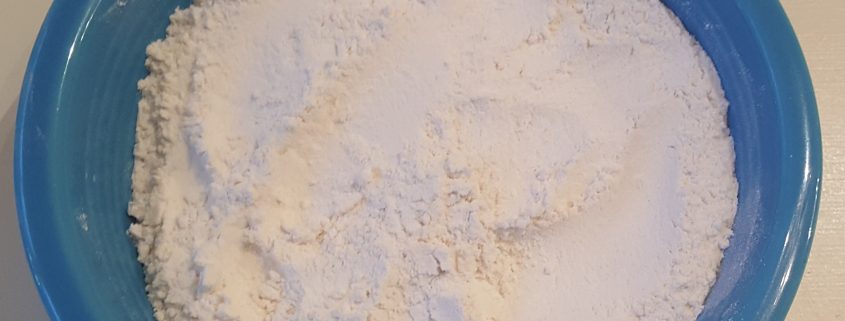The Power of Flour
 We’ve all been there. Struggling between the love of baking and the attempt to lead a healthier lifestyle. There are many flour options on the market today, each one providing a nutritional boost to your baked goods.
We’ve all been there. Struggling between the love of baking and the attempt to lead a healthier lifestyle. There are many flour options on the market today, each one providing a nutritional boost to your baked goods.
5 Flours to Try the Next Time You Bake
1.Quinoa Flour
Quinoa flour is growing in popularity, and for good reason. This ancient grain is packed with complete proteins, meaning it contains all of your essential amino acids. It is also high in fiber, aiding in healthy digestion.
Quinoa flour is bold and nutty and can provide a unique flavor profile to many traditional baked goods. In small amounts, it will remain moist but be careful when using too large of an amount as your final product may become very dry.
Try using half whole wheat flour and half quinoa flour in your next recipe for a protein-filled cookie or muffin.
2.Spelt Flour
Spelt flour, an ancient grain, has an excellent nutty flavor and is slightly sweeter then whole wheat flour. It is higher in protein and lower in calories than white flour and will add an interesting taste to traditional baked goods like cookies and cakes.
When baking with spelt, it is important to note that it does not rise as well as traditional flour. For a better rising dough, try mixing half wheat flour with half spelt flour for a better-quality bread. It is also particularly good for making bread and pizza crusts.
Spelt flour does contain gluten, so it shouldn’t be consumed by those following a gluten-free diet.
3.Barley Flour
Barley flour is a high fiber alternative to white flour. It has a slightly sweet and nutty flavor and is often moist when used in small amounts.
When used as the only flour source, it can lead to a very crumbly product. However, it is particularly good when used for baking breads and biscuits, leading to a light and chewy texture. Try using half barley flour and half wheat flour when making breads, and use only barley flour for a delicious pancake.
It has been said that barley is great at aiding in blood sugar regulation so this flour should find its way into your pantry!
4.Buckwheat Flour
Buckwheat flour is another ancient grain that has been known to have somewhat of an earthy or grassy flavor. Although this may scare some people away, it shouldn’t scare you!
Buckwheat is a seed that is naturally gluten-free and is being used more and more in pancake and pastry recipes. Because it is gluten-free, it is best when mixed with wheat flour for a better texture and can give you a truly unique tasting pastry.
This flour is low in fat, high in protein and fiber and is a food that can greatly elevate the nutritional quality of your pastries.
5.Almond Flour
Almond flour is an excellent alternative for those needing to reduce their carbohydrate and sugar intake. It is full of protein and high in healthy fats such as monounsaturated fatty acids. Its higher fat content leads to a slightly moister texture then some of the other flour alternatives.
Unlike other flours, you do not need to use as much liquid with almond flour but this may take some experimenting to get the texture you desire. Be sure to include eggs in any recipe you are using almond flour in to help the baked good rise.
Almond flour is a great alternative for any recipe but is especially good when used in gluten-free recipes!
There should be no reason to stop baking while on your journey to better health. It can be a joyous experience in which we pass down traditions and spend valuable time with you family.
With all of these nutritious flours emerging, baking can not only be fun and delicious, but can help improve your health!
Your Turn to Take Action: What’s your favorite flour alternative? Let me know in the comments below!


Trackbacks & Pingbacks
[…] out for a flavor/texture twist. You can try almond, coconut and even oat flour! Check out my blog here that talks about 5 different types of flours you can […]
[…] flour, but there’s also wheat, quinoa, buckwheat, almond, coconut, and more. Check out a previous blog of mine that explains some of the different flours. As a family, experiment with the different […]
Leave a Reply
Want to join the discussion?Feel free to contribute!